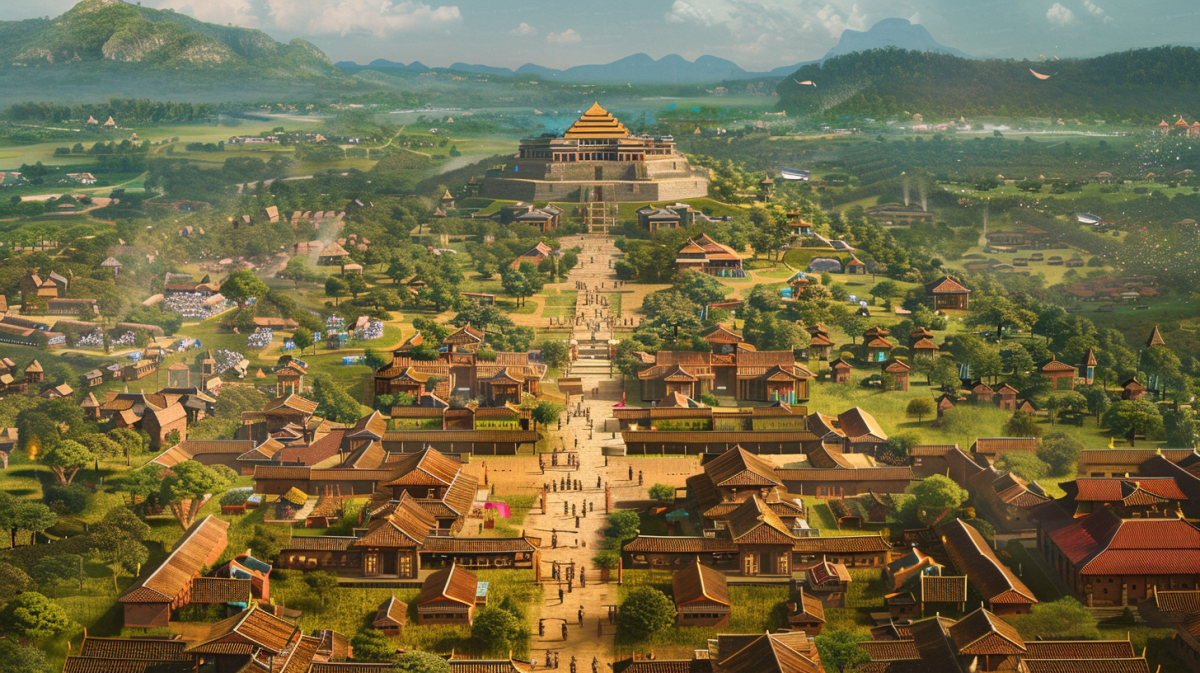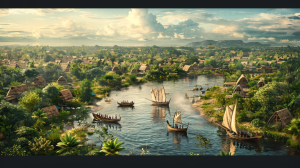Abu Bakr ibn Umar, an esteemed Almoravid leader, is notably recognized for founding Marrakesh in the 11th century. This historic city, located in modern-day Morocco, became a pivotal centre for culture, trade, and politics under his leadership, cementing his lasting influence in North African history.

Abu Bakr ibn Umar hailed from the Banu Turgut clan of the Lamtuna Berbers. His uncle, Yahya Ibn Ibrahim, was the Lamtuna’s chief and co-founded the Almoravid movement in the 1040s alongside Maliki scholar, Abdallah ibn Yasin.
Following Yahya ibn Umar’s demise in 1056 at the Battle of Tabfarilla, Abdallah ibn Yasin designated Abu Bakr as the Almoravids’ military leader. That same year, Abu Bakr reclaimed Sijilmassa, previously secured and then lost by Yahya, from the Maghrawa of the Zenata alliance.
Abu Bakr acted swiftly to fortify his hold on Sijilmassa, leading efforts to dominate southern Morocco’s paths and valleys. He initially secured the Draa valley, and with the support of the Sanhaja tribes, further expanded Almoravid’s influence. By 1057, Abu Bakr had successfully taken Taroudannt, the Sous valley’s main city. Through strategic diplomacy, Abdallah ibn Yasin secured a pact with the Masmuda Berbers, ensuring an unhindered passage to capture the Aghmat citadel by 1058. However, while venturing into Berghwata territory, Abdallah met a tragic end, prompting Abu Bakr to retaliate and subdue the Berghwata in a fierce campaign.
With the passing of Abdallah ibn Yasin, Abu Bakr became the undisputed leader of the Almoravids. Eschewing religious titles, he, and subsequent Almoravid leaders, adopted the title of amir al-Muslimin (“Prince of the Muslims”), steering clear of more grandiose titles.
Abu Bakr wed Zaynab an-Nafzawiyyah, Aghmat’s most affluent woman. Her expertise proved invaluable in understanding southern Morocco’s intricate politics. However, Abu Bakr, accustomed to the vastness of the desert, felt confined in bustling Aghmat. Around 1060/61, longing for a desert-like ambience, he and his Sanhaja allies established a base near the Tensift River, reminiscent of the Sahara. This base evolved into Marrakesh, a city that exuded desert charm with its palms and oasis aura.

He entrusted Aghmat’s leadership and the battle against the northern Zenata to his cousin, Yusuf ibn Tashfin. Through the 1060s, while Abu Bakr governed Marrakesh, Yusuf led the Almoravid troops, dismantling Zenata fortresses. By 1070, they had captured the Moroccan heartland, Fez. Yet, murmurs of discontent echoed among the Almoravids, especially those in the Sahara, deeming northern battles futile and costly. Following Fez’s conquest, Abu Bakr sensed the need to pacify his Sahara homeland and assigned Morocco’s guardianship to Yusuf. Traditionally, before prolonged military ventures, Sanhaja men would divorce their wives. Thus, Abu Bakr divorced Zaynab, suggesting she wed Yusuf for security.
By 1072, after settling Sahara matters, Abu Bakr ventured back to Morocco. However, power had sweetened Yusuf, and with Zaynab’s influence, he persuaded Abu Bakr to relinquish his northern territories. Out of respect, Yusuf retained Abu Bakr’s name on the Almoravid currency till his passing.
Abu Bakr then shifted his focus to the Almoravid southern wing, launching campaigns against the Ghana Empire around 1076. He’s lauded for propagating Islam across the Sahara’s southern edge, with expeditions reaching as far as Mali and Gao.
Abu Bakr’s life journey culminated in 1087. Post his demise, his territories were divvied up among his heirs.
Local Mauritanian lore suggests Abu Bakr’s end came at the hands of the “Gangara,” hinting at a fatal poisoned arrow shot by an aged, sightless Gangara leader. His final resting place lies in the Tagant region. Another tale attributes his death to Amar Godomat, a Serer archer, near Senegal’s Lake Rzik. This legend adds a twist, mentioning a pregnant wife, Fâtimata Sal, who bore a son, Ndiadiane Ndiaye, who later founded the Wolof kingdom of Waalo.
Related Posts
Sources
“Abu Bakr ibn Umar.” Wikipedia. Accessed [22.10.23]. https://en.wikipedia.org/wiki/Abu_Bakr_ibn_Umar.





